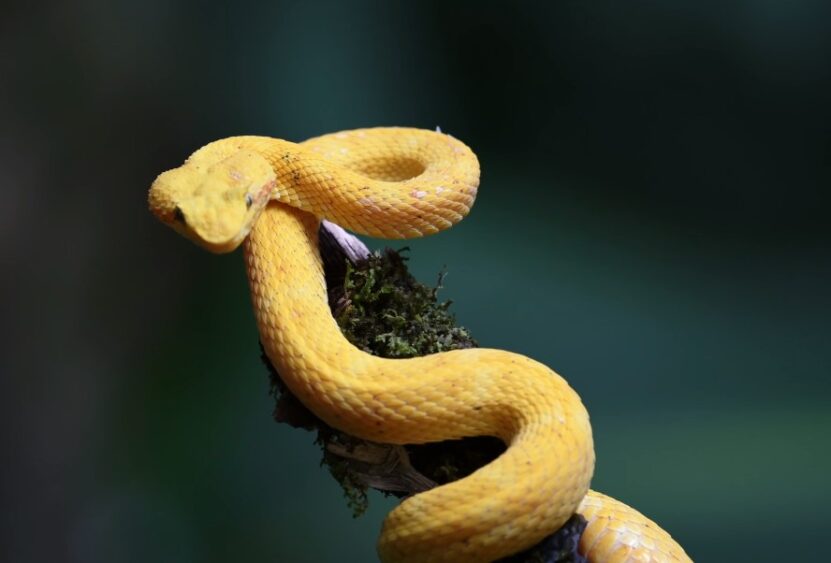Illinois, with its vast landscapes ranging from sprawling farmlands and dense forests to serene wetlands, boasts an impressive array of biodiversity. Among the fauna are various species of snakes, some of which are venomous.
While the mere mention of venomous snakes often evokes fear or trepidation, it’s essential to appreciate their integral role in the ecosystem and understand the actual risks they pose. This article provides an overview of the venomous snakes to stay away from in this area.
Eastern Massasauga Rattlesnake
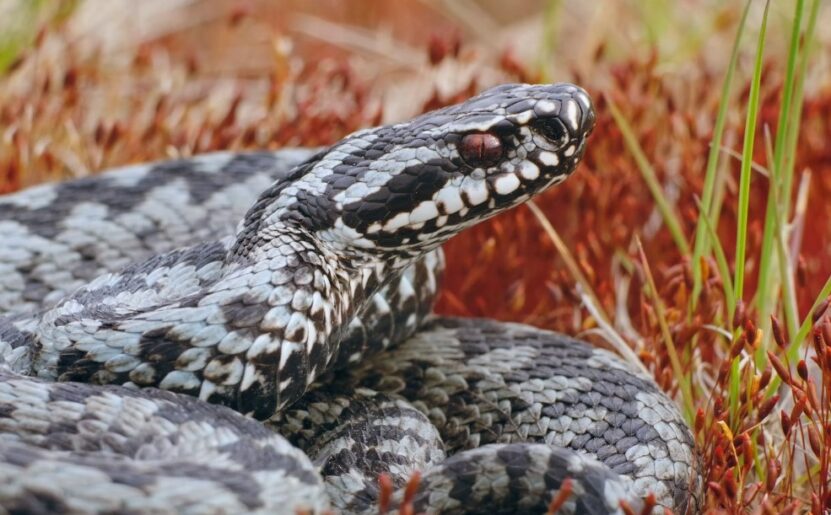
Nestled in the wetlands of Illinois is the Eastern Massasauga, the state’s solitary rattlesnake. Growing to a modest length of 18 to 30 inches, it’s not the largest of venomous snakes but has a look that indicates how dangerous it can be.
Appearance
Beyond its size, this rattlesnake can be identified by its robust body and a gray or light brown base hue, dotted with dark, hourglass-shaped bands. The rattle at the end of its tail, which it fervently shakes when agitated, acts as a deterrent to potential threats.
Habitat
Eastern Massasauga prefers damp environments. Marshes, wet prairies, and floodplain forests are its habitats of choice. However, the modern world’s relentless march has seen many of these wetlands drained for agriculture and urbanization, putting large pressure on the snake’s habitat and subsequently, its numbers.
Bite
An encounter with the Eastern Massasauga can be startling, but a bite, though painful, is typically not life-threatening for healthy adults. Nevertheless, if bitten, immediate medical attention is necessary.
Copperhead
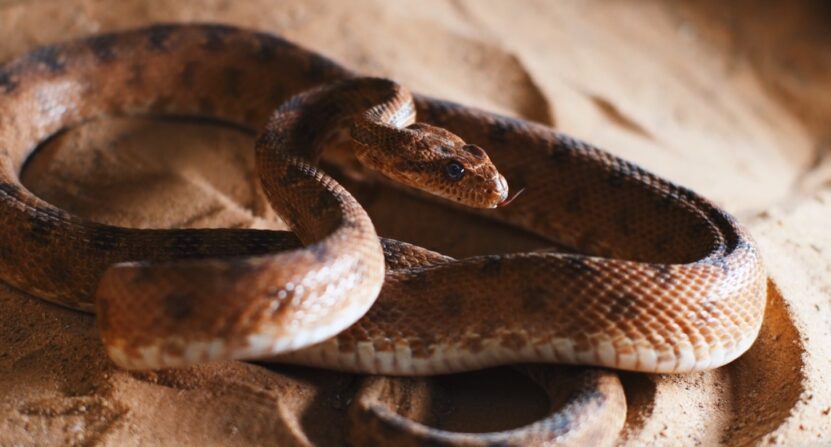
If you are traveling through the southern parts of the state, there is a chance to see the Copperhead snake in its natural habitat. This medium-sized serpent is known for its alarming visual features.
Appearance
It derives its name from the distinct copper-red hue of its head. This coloration, combined with chestnut crossbands set against a paler body, makes it a standout.
Habitat
The Copperhead prefers rugged terrains. Wooded areas interspersed with rocks and hills are its playgrounds. Proximity to water bodies, especially streams, is also favored, where they often rest on logs or stones.
Bite
Though the least venomous among Illinois’ serpents, a Copperhead’s bite is not to be taken lightly. The experience can be agonizing, and there’s potential for considerable tissue damage.
Cottonmouth
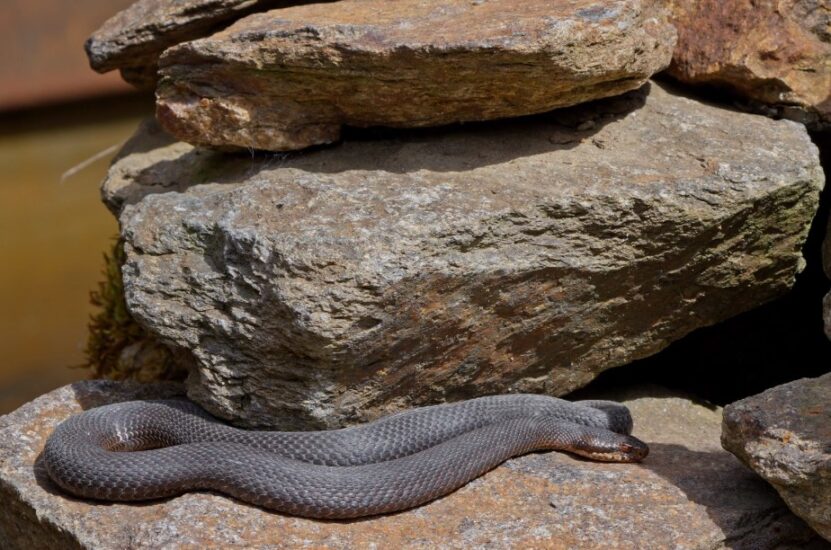
The Cottonmouth, a frequent resident of southern Illinois, is often misidentified due to its resemblance to other harmless water snakes.
Appearance
A stout-bodied snake, its dark, nearly black appearance can be menacing. However, its most striking feature is revealed when threatened – a stark white mouth interior that stands in stark contrast to its dark exterior.
Habitat
As its alias “Water Moccasin” suggests, this snake is invariably found near freshwater locales. Be it lakes, ponds, rivers, or marshes, if there’s water, there’s a good chance a Cottonmouth might be lurking nearby.
Bite
Encounters should be approached with caution. Their venom, though not the most potent, can wreak havoc, leading to extensive tissue damage accompanied by pain and swelling.
Timber Rattlesnake

The Timber Rattlesnake, indigenous to the southern and western parts of Illinois, is undeniably the most iconic rattler of the region.
Appearance
These snakes are hefty and lengthy, flaunting a pattern of pronounced dark bands set against a contrasting lighter backdrop.
Habitat
They have a distinct preference for deciduous forests and mixed woodlands. Areas rich in rock ledges for sunning and suitable dens for hibernation are particularly favored.
Bite
Their venom is a force to be reckoned with. A bite can induce severe symptoms like intense pain, swelling, and even systemic reactions like weakness or a state of shock. Immediate medical intervention is crucial.
Behavior and Diet
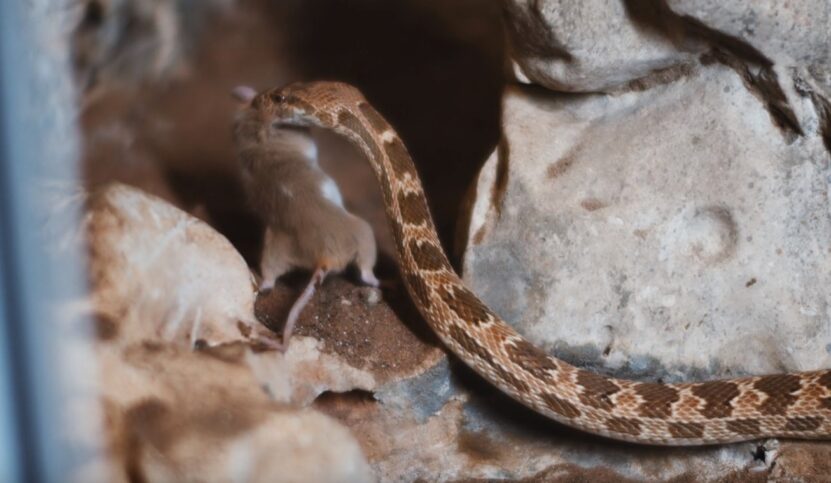
Eastern Massasauga Rattlesnake is primarily diurnal, preferring to hunt during the day, especially in cooler weather. Its diet mainly consists of small mammals like voles and mice. Their heat-sensitive pits between the eyes and nostrils aid in detecting warm-blooded prey. Unlike the Eastern Massasauga, the Copperhead is crepuscular, meaning it’s most active during dawn and dusk.
This behavior increases during summertime. They feed on a variety of prey, including mice, birds, insects, and even other snakes. The Cottonmouth has a diverse palate. From fish and amphibians to small mammals and birds, its diet varies based on its habitat and the season.
Timber Rattlesnake, with its powerful venom, often consumes larger prey. Their diet comprises rodents, but they’ve been known to prey on squirrels and rabbits as well.
Conservation Status and Human Interaction

Due to habitat loss, the Eastern Massasauga is listed as a threatened species under the U.S. Endangered Species Act. Conservation efforts, including habitat restoration and public education, are ongoing to protect this species.
While not currently listed as endangered or threatened, Copperheads face threats from habitat destruction and human encounters. It’s essential to note that they, like all snakes, play a vital role in controlling pest populations.
When it comes to Cottonmouth species, their proximity to water faces threats from pollution and habitat degradation. Efforts to maintain clean waterways benefit not only the Cottonmouth but a plethora of other species.
There are certain threats for the Timber Rattlesnake as well, and it is crucial for people to work on promotion of proper care for nature and all its inhabitants.
FAQs
What time of year are snakes most active in Illinois?
Snakes are ectothermic, meaning they rely on external heat sources to regulate their body temperature. As such, they are most active during the warmer months, typically from late spring to early fall. During winter, they go into brumation, a hibernation-like state.
If I find a snake in my backyard, should I call animal control?
If the snake is not posing an immediate threat, it’s best to leave it alone, as most snakes in Illinois are harmless. However, if you believe it’s a venomous species or it’s in a location where it could pose a risk, you can contact local animal control or a wildlife specialist for advice or removal.
How can I make my property less attractive to snakes?
To deter snakes from your property, keep your yard free of clutter, tall grass, and debris, where snakes might hide. Ensure rodent populations are controlled, as they serve as a primary food source for many snakes. Seal any gaps or holes in your home’s foundation to prevent snakes from seeking shelter inside.
Are there any colors or patterns that can help identify a snake that is venomous?
While some venomous snakes have distinctive patterns or colors, it’s essential to note that many harmless snakes have evolved to mimic these dangerous species as a defense mechanism. In Illinois, familiarity with the specific appearances of the four venomous species is more reliable than general color or pattern rules.
The Bottom Line
Nature is unpredictable, but with knowledge and preparedness, we can navigate challenges it throws our way. Respecting these creatures’ space and understanding their behavior can go a long way in ensuring peaceful coexistence.

